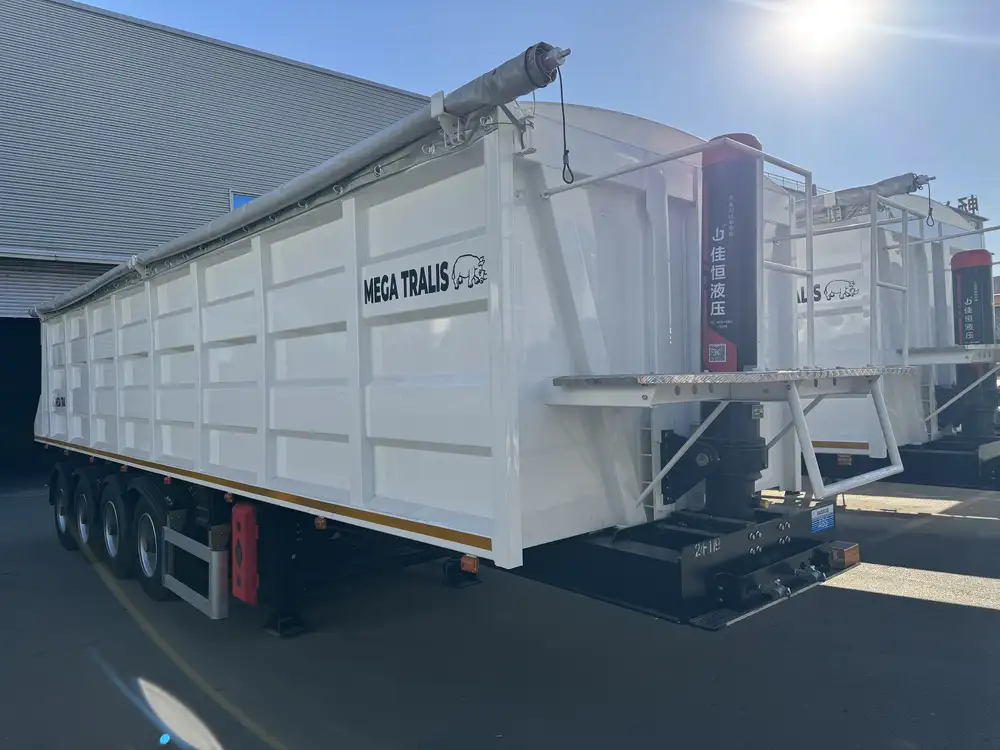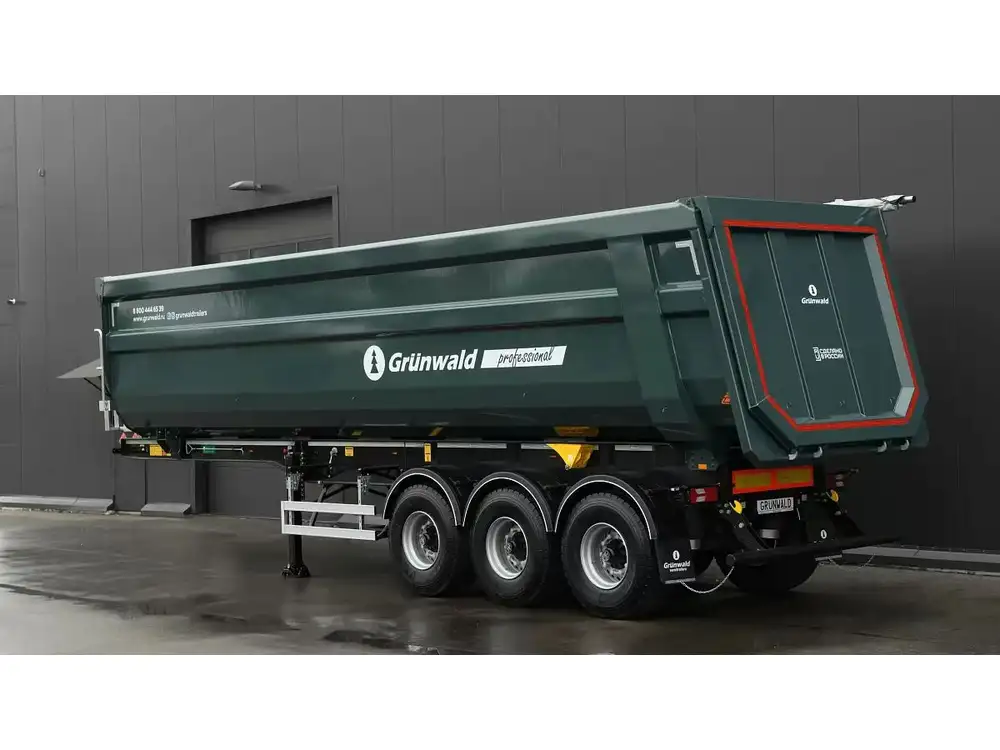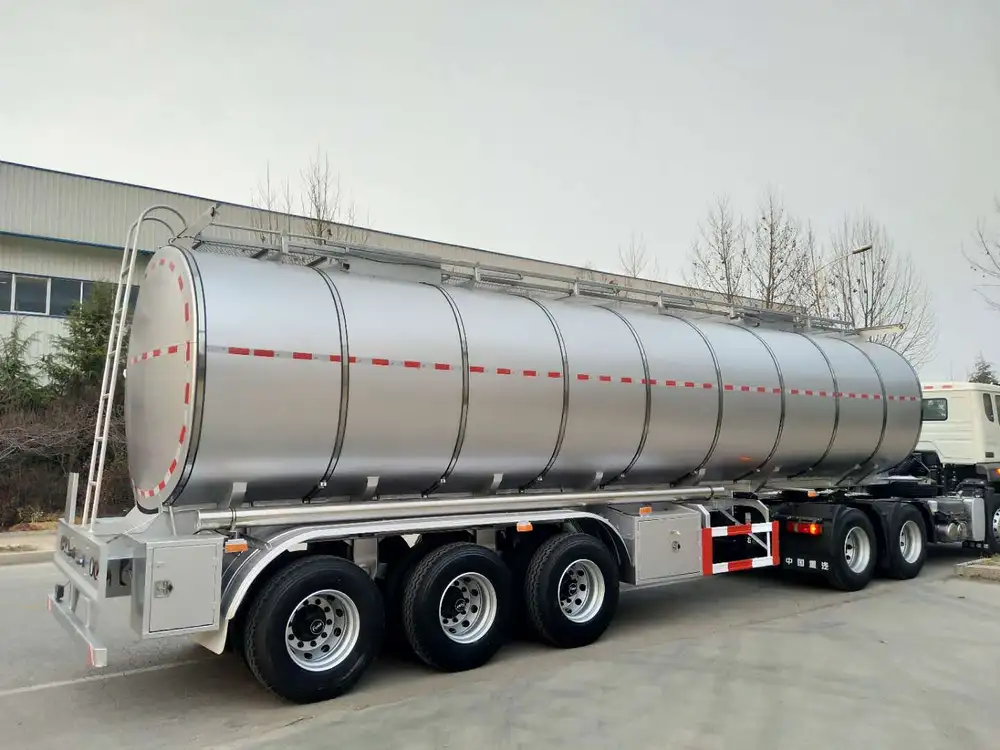In the realm of heavy-duty transportation, dump trailers stand out for their versatility and efficiency in hauling various materials. However, like many pieces of machinery, they can encounter issues, particularly regarding hydraulic pressure. In this guide, we will delve into the intricate steps required to safely and effectively release hydraulic pressure from a dump trailer.
Understanding Hydraulic Systems in Dump Trailers
Before we embark on the procedure of releasing hydraulic pressure, it’s important to understand the basic functioning of hydraulic systems in dump trailers. Hydraulic systems utilize fluid dynamics to facilitate the lifting and dumping of heavy loads. The process consists of several critical components:
- Hydraulic Pump: Pumps hydraulic fluid into the lift cylinders.
- Hydraulic Cylinders: Responsible for lifting the trailer bed.
- Hydraulic Fluid Reservoir: Stores the hydraulic fluid.
- Control Valves: Regulate fluid flow and pressure.
Importance of Managing Hydraulic Pressure
Excess hydraulic pressure not only hinders the operation of the dump trailer but can also pose safety risks. Over-pressurization can lead to hydraulic failure or damage to the trailer’s components. Regular maintenance and proper handling of hydraulic systems ensure a longer lifespan and optimal performance.

Steps to Safely Release Hydraulic Pressure on a Dump Trailer
Releasing hydraulic pressure on a dump trailer is a straightforward yet critical task that must be performed with utmost caution. Below, we have outlined the steps involved:
1. Preparation and Safety Precautions
Before beginning the process, it’s essential to ensure safety and preparedness. We recommend the following steps:
- Wear Safety Gear: Protective gloves, goggles, and boots should be worn to guard against any hydraulic fluid spills or accidental injuries.
- Check the Environment: Ensure the area around the dump trailer is clear and free of obstacles. A flat, stable surface is ideal.
- Consult the Manual: Always refer to the dump trailer’s owner manual for specific guidelines and manufacturer recommendations.
2. Locate the Hydraulic Control Valve
The hydraulic control valve is the pivotal component used in managing the fluid flow. Finding it lays the groundwork for effective pressure release.
- Depending on the trailer model, the control valve may be located near the hydraulic pump or on the side of the trailer.
- Familiarize yourself with its layout; this knowledge is crucial for the subsequent steps.

3. Lower the Dump Trailer Bed
After ensuring all safety measures are in place and proper identification of the control valve, proceed to lower the dump trailer bed.
- Activate the Control Valve: Shift the control lever they operate the trailer’s hydraulic system to the ‘lower’ position. This action will initiate the downward movement of the trailer bed.
- Watch for Movement: Maintain a watchful eye on the trailer bed as it descends. It should lower smoothly; any hiccup may signify a problem in the hydraulic system.
4. Open the Hydraulic Control Valve
Perform the following actions to open the control valve and relieve hydraulic pressure.
- Manual Release Valve: Locate the manual release valve if your trailer is equipped with one. Turn it counterclockwise to relieve pressure and allow the hydraulics to reset.
- Check for Fluid Leakage: It’s essential to monitor for any signs of hydraulic fluid leakage during this process, as it may indicate worn parts or damage.
5. Remove Hydraulic Fluid (If Necessary)
In some instances, it may be advantageous or necessary to remove hydraulic fluid to ensure full depressurization.
- Disconnect the Hoses: If releasing pressure requires removal of hydraulic fluid, make sure to disconnect the hoses connected to the hydraulic pump.
- Collect Fluid in a Container: Utilize an appropriate container to catch any hydraulic fluid that escapes. Exercise care to minimize spillage and follow proper disposal procedures outlined for hydraulic fluids.

6. Perform a System Check
Once hydraulic pressure is released, conducting a comprehensive check of the hydraulic system and components will help prevent future malfunctions.
- Inspect Hoses and Fittings: Look for cracks, leaks, or damage in hydraulic hoses and fittings.
- Check Fluid Levels: After releasing pressure, always ensure the hydraulic fluid is at the required levels for optimal function.
- Examine the Pump and Cylinders: Look for any signs of wear or damage that may necessitate repairs or replacements.
Troubleshooting Common Issues
Even with proper procedures, problems may still arise. Below are some common issues and recommended solutions when releasing hydraulic pressure on dump trailers:
| Issue | Possible Cause | Solution |
|---|---|---|
| Fluid Leakage | Worn hoses or fittings | Replace and reseal all damaged parts |
| Trailer Bed Won’t Lower | Blocked valves | Clean or replace valve components |
| Inconsistent Pressure Release | Faulty manual release valve | Inspect and replace if necessary |
| Hydraulic Pump Failure | Lack of maintenance | Regularly check pump and fluid levels |
Regular Maintenance Tips
Maintaining the hydraulic system of a dump trailer is paramount for its longevity and efficiency. Consider these maintenance tips:
- Routine Inspections: Regular visual inspections can identify potential issues before they escalate.
- Hydraulic Fluid Changes: Change hydraulic fluid as per manufacturer guidelines to ensure system efficiency.
- Clean Filters: Replace or clean hydraulic filters periodically to prevent clogs.

Frequently Asked Questions (FAQs)
How often should I check the hydraulic fluid level?
We recommend checking the hydraulic fluid level before each use, particularly if the dump trailer has been in regular operation.
What are the signs of hydraulic fluid contamination?
Signs of fluid contamination may include discoloration, debris within the fluid, or a burning smell. In such cases, change the fluid immediately.

Can I operate the dump trailer with low hydraulic fluid?
Operating a dump trailer with low hydraulic fluid is not advisable, as it can lead to severe wear or complete failure of the hydraulic system.
What should I do if I experience a sudden loss of hydraulic pressure?
If you experience a sudden drop in hydraulic pressure, stop the operation immediately and inspect for leaks, damaged hoses, or faulty components. Consult with a professional if necessary.
Conclusion
Successfully releasing hydraulic pressure on a dump trailer is crucial for both safety and operational effectiveness. By adhering to this comprehensive guide, we ensure that the process is not only efficient but safe, minimizing the risk of accidents or equipment failure. Regular maintenance and troubleshooting can prolong the lifespan of your dump trailer, propelling your operations forward.
Always remember, when in doubt, consult the manufacturer’s manual or a professional technician. Engaging in proper techniques fosters a safe working environment and efficient use of dump trailers, paralleling a commitment to excellence in handling heavy-duty transport tasks.



